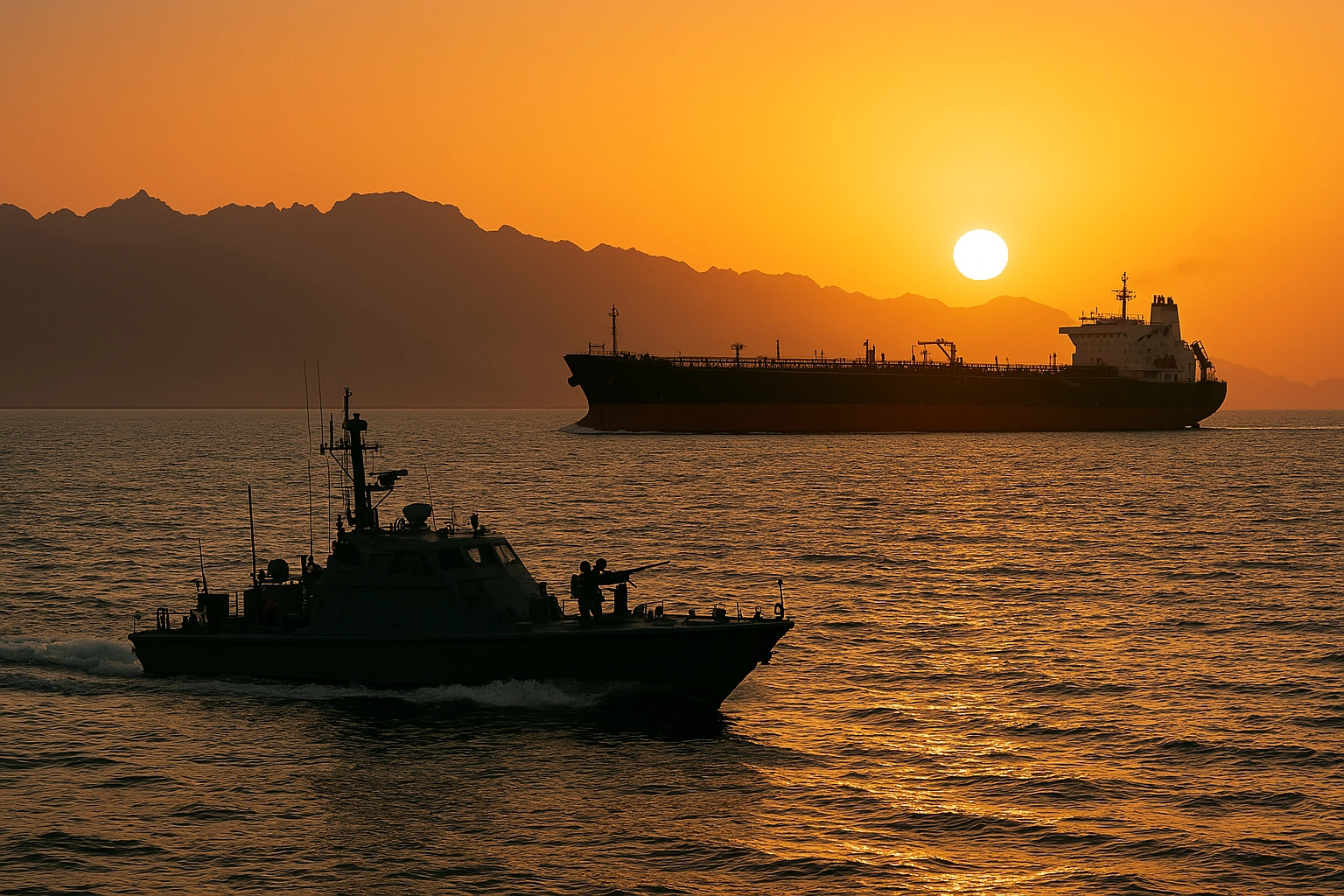The Strait of Hormuz is not new as one of the globally strategic sea routes. Approximately one fifth of global crude oil traded on the market and the portion of liquefied natural gas runs through this thin waterway around the Persian Gulf and the Arabian Sea.
On July 9, 2025, it finds itself once more at the epicentre of a high-stake geopolitical standoff.
The parliament of Iran voted in favour of a possible blockage of the Strait following a sequence of airstrikes by the United States on Iranian military bases in Syria and Iraq. The fact that the legislation is still in process of implementation indicates that Iran will be ready to apply its geographical advantage as a punitive means. Such an action would be like an earthquake to the world energy markets and the possibility of a direct military conflict will increase.
Trump’s Calculated Escalation
The triumphant re-entry of the former President Donald Trump into the office has already given the international diplomacy a more confrontational tone. He overturned a string of diplomatic initiatives under the former administration and reinstated bellicose talk of Iran in a matter of days of his inauguration. The move to renew supplies of weapons to Ukraine and the ensuing airstrikes in the Middle East seem to be aimed at restoring the American supremacy but can easily deteriorate a volatile region into the mess.
The argument by the White House that these attacks were defensive in nature is a point of deep concerns with most foreign viewers. The obvious thing is that such verbiage and such military moves go along with a political course that has some kind of pattern of provocation behind it all, to give Iran a test of her patience and will. The case of Iran threatening to close the Strait in turn cannot be discounted as bluster, it is merely a reaction that Iran perceives as the Western aggression, which it finds to be on the rise.
Oil, Inflation, and Economic Shockwaves
Although military implications of a potential closure are very serious, economic implications are maybe even more timely. The entire world is already facing chronic inflation, fragility in supply chain, and a lagging growth. It would hardly be surprising that any impediment to oil flow through the Strait of Hormuz would rocket the price of crude oil to well over the $150 per barrel frontier, and ripple effects would be felt in most sectors of the global economy.
The prices of gasoline would soar in the countries where it is consumed. The transportation expenses would increase. Countries that depend on Middle East energy like Japan, India and most of the European Union would be in a dire situation of energy security.
The worst affected would-be developing economies which are yet to come out of the debt trap of the pandemic and the food crisis brought about by climate change. It would make inflation faster, purchasing power would decline and there would be political unrest in vulnerable areas.
The markets are already on edge with gold hitting record highs and traders taking refuge in safe-haven assets. The threat of closure on the Strait shakes the stability of global security. However, should action come after the words, the effect might be tremendous and lasting.
The Risk of Miscalculation
Among the most dangerous aspects of the ongoing scenario, one should mention the hazard of miscalculation. Gulf military hawks have never ceased featuring the risks of a military confrontation gone away as warships, drones, and proxy forces stood near one another on the crowded battlefield. One act all it would take is a misfired missile or an aggressive manoeuvre on the part of the naval forces or a misreading of a radio command to attract the full-scale conflict.
History teaches that the Strait of Hormuz has become a strategic source of tension in the past. During the 1980s, oil tankers were attacked and there were shelling’s between the United States and Iran during the Iran-Iraq war. Similar threats on part of Iran had occurred twice, in 2011 and in 2019, respectively during times of tension and on both occasions the entire world had been on edge with the threat of a crisis. The diplomatic pressure releases (which used to serve as arbitrating of tensions) including backchannel diplomacy, third-party mediation as well as multilateral involvement do not exist in the international order of 2025 to any considerable degree.
A Call for Global Diplomacy
World leaders must move with haste to calm down the situation. The UN Security Council should have an urgent meeting to negotiate between Iran, the United States and Gulf states. The main actors who can serve as intermediaries need to be invited, including China, Russia, and the EU, to appeal to calmness based on their own ties.
Better than that, we should have a renewed faith to multilateralism. The world has grown too long a time, being subject to the moves into blocks, when diplomacy is considered a sign of weakness and military might is employed as the initial strategy rather than the final one. This episode has presented the world powers with an opportunity to appreciate the absolute vulnerability of our interdependent structures, and the truly high price of brinkmanship.
The World Can’t Afford this Crisis
The idea of closing Strait of Hormuz is not only a local problem but is a global crisis in the making. Should it escalate into open armed conflict or indefinite blockade, the effect will be experienced by the common citizen on all continents, the farmer in Kenya who has to shell out extra money on diesel, the commuter in Germany who has to pay astronomical sums on his gas or the small business owner in India who is unable to cope with the increase in cost of goods.
This is a time that diplomacy must come to the forefront again more than ever. The leaders should shelve egos and focus on peace as opposed to provocation. Strait of Hormuz is not a shipping lane it is a lifeline, and its decimation might be the straw that breaks the camel back in a world caught way too close to the edge.








